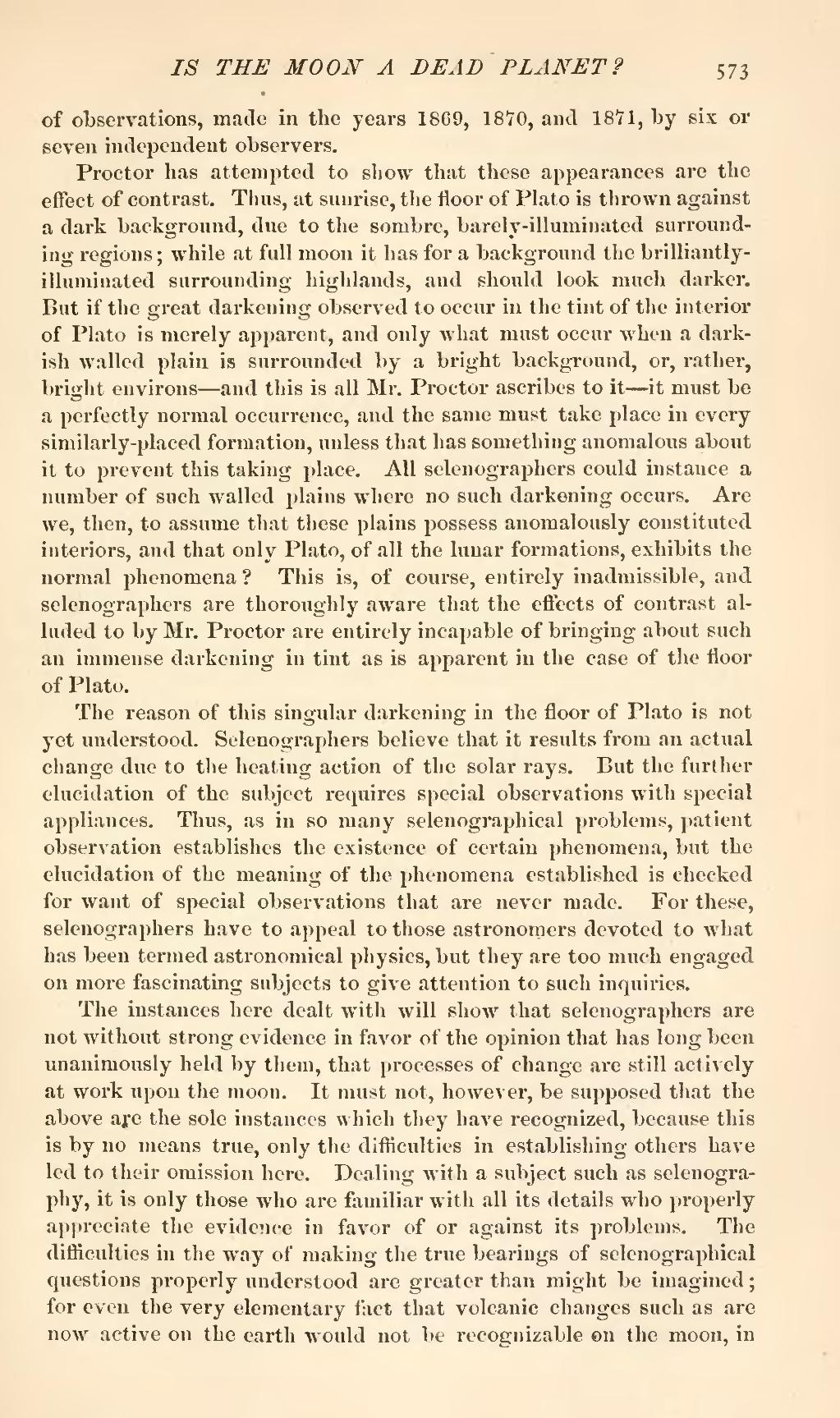of observations, made in the years 1869, 1870, and 1871, by six or seven independent observers.
Proctor has attempted to show that these appearances are the effect of contrast. Thus, at sunrise, the floor of Plato is thrown against a dark background, due to the sombre, barely-illuminated surrounding regions; while at full moon it has for a background the brilliantly illuminated surrounding highlands, and should look much darker. But if the great darkening observed to occur in the tint of the interior of Plato is merely apparent, and only what must occur when a darkish walled plain is surrounded by a bright background, or, rather, bright environs—and this is all Mr. Proctor ascribes to it—it must be a perfectly normal occurrence, and the same must take place in every similarly-placed formation, unless that has something anomalous about it to prevent this taking place. All selenographers could instance a number of such walled plains where no such darkening occurs. Are we, then, to assume that these plains possess anomalously constituted interiors, and that only Plato, of all the lunar formations, exhibits the normal phenomena? This is, of course, entirely inadmissible, and selenographers are thoroughly aware that the effects of contrast alluded to by Mr. Proctor are entirely incapable of bringing about such an immense darkening in tint as is apparent in the case of the floor of Plato.
The reason of this singular darkening in the floor of Plato is not yet understood. Selenographers believe that it results from an actual change due to the heating action of the solar rays. But the further elucidation of the subject requires special observations with special appliances. Thus, as in so many selenographical problems, patient observation establishes the existence of certain phenomena, but the elucidation of the meaning of the phenomena established is checked for want of special observations that are never made. For these, selenographers have to appeal to those astronomers devoted to what has been termed astronomical physics, but they are too much engaged on more fascinating subjects to give attention to such inquiries.
The instances here dealt with will show that selenographers are not without strong evidence in favor of the opinion that has long been unanimously held by them, that processes of change are still actively at work upon the moon. It must not, however, be supposed that the above are the sole instances which they have recognized, because this is by no means true, only the difficulties in establishing others have led to their omission here. Dealing with a subject such as selenography, it is only those who are familiar with all its details who properly appreciate the evidence in favor of or against its problems. The difficulties in the way of making the true bearings of selenographical questions properly understood are greater than might be imagined; for even the very elementary fact that volcanic changes such as are now active on the earth would not be recognizable on the moon, in
